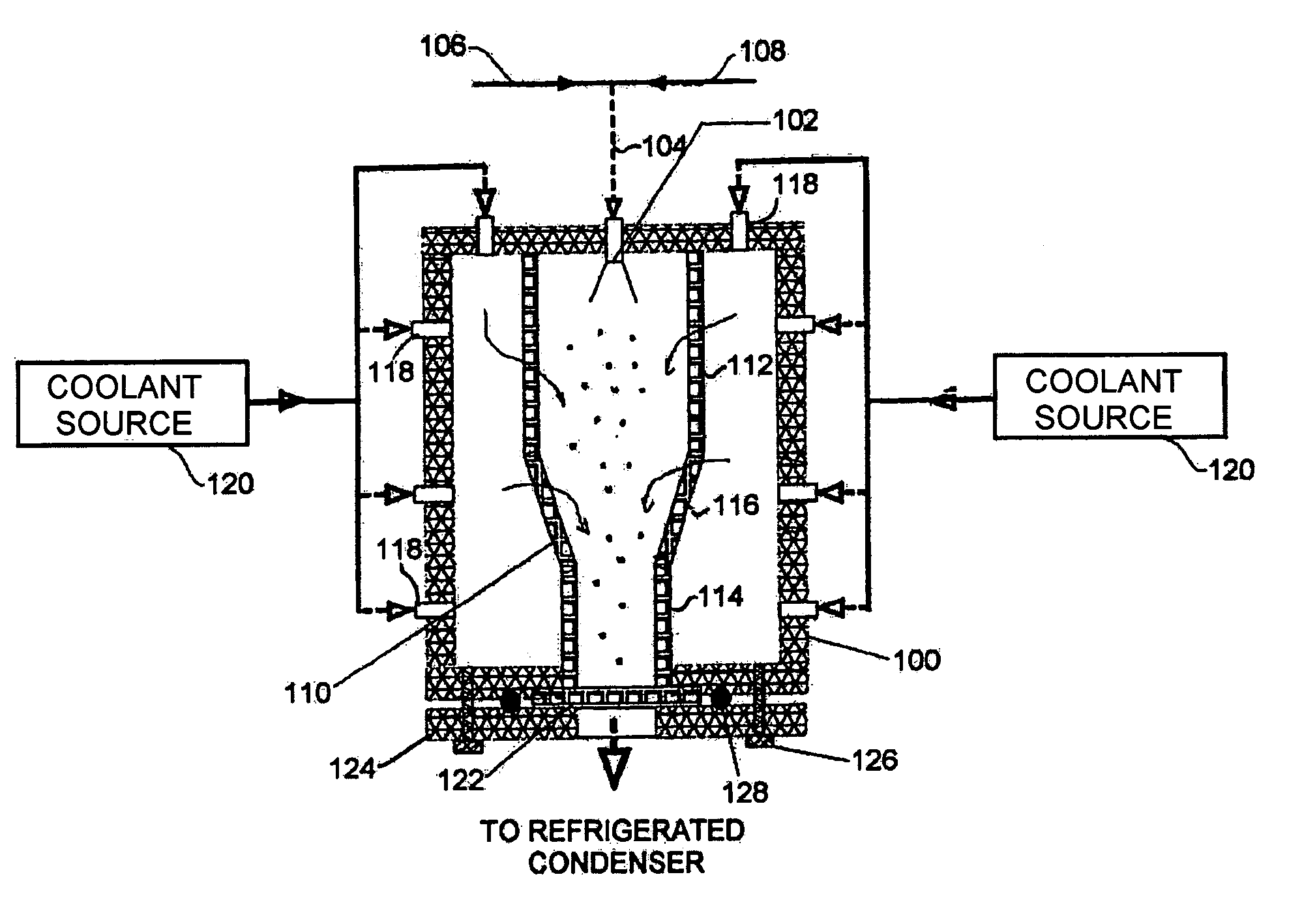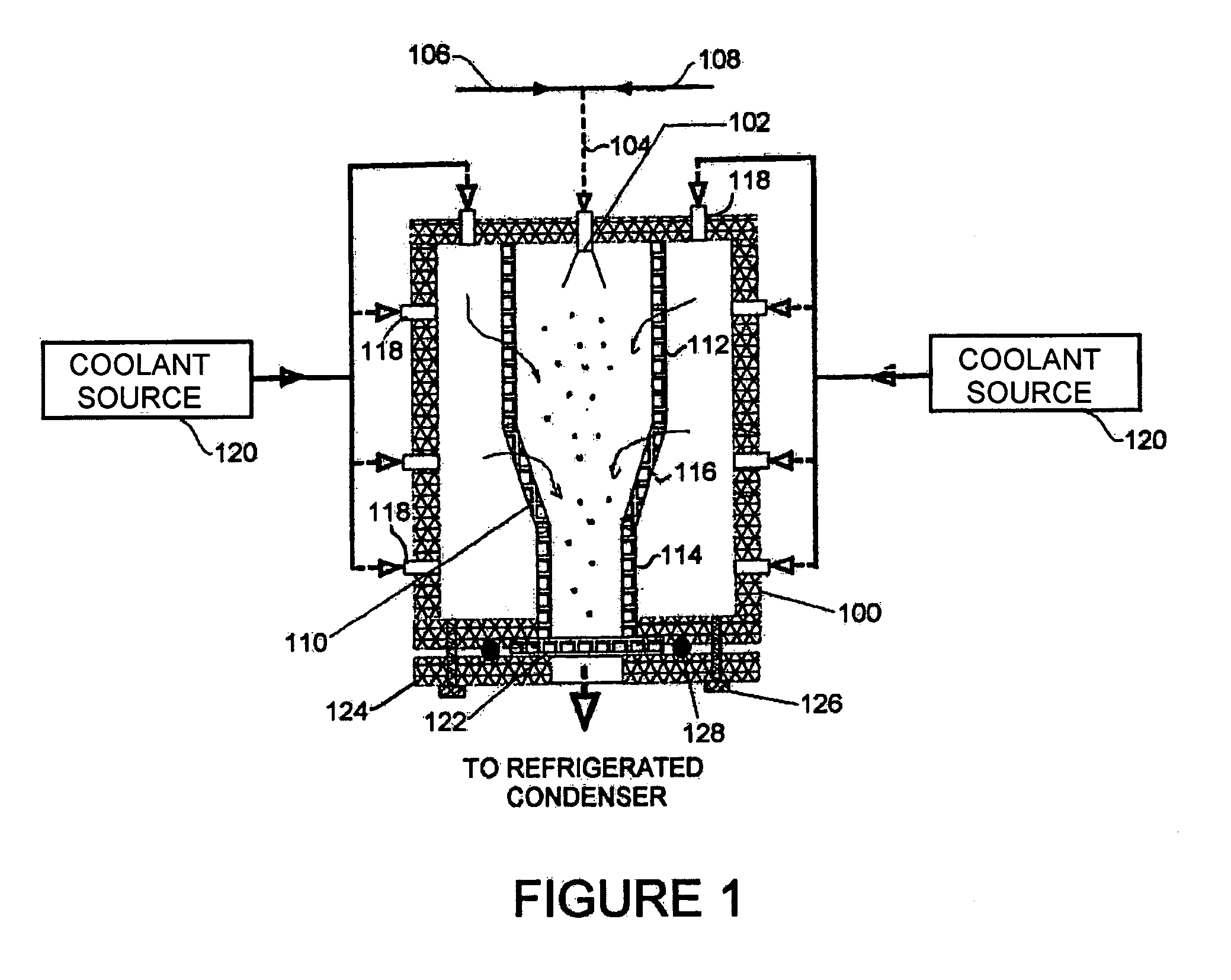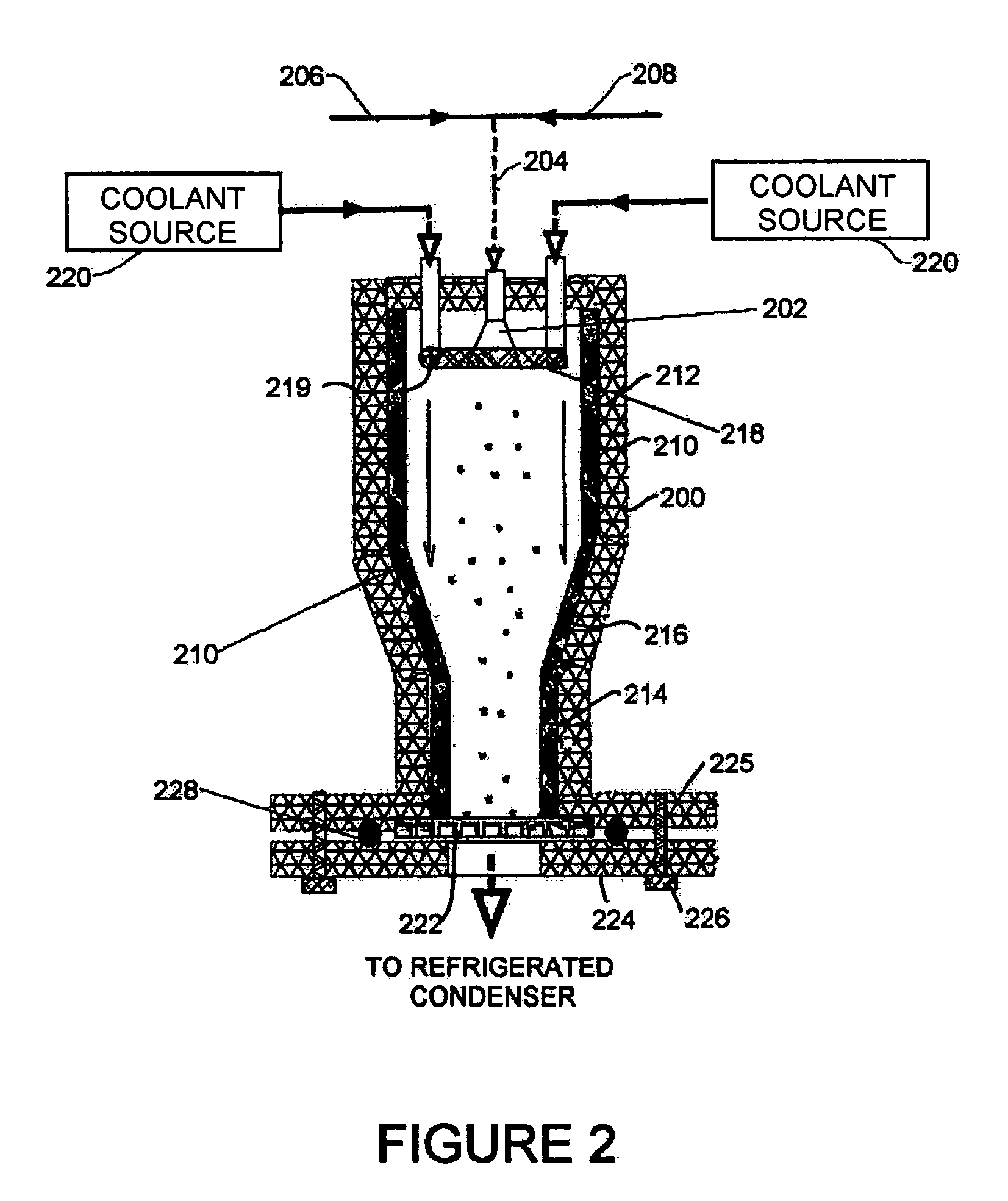Powder formation by atmospheric spray-freeze drying
a technology of atmospheric spray-freeze drying and powder, which is applied in the direction of drying solid materials without heat, drying machines with progressive movements, lighting and heating apparatus, etc. it can solve the problems of unstable pharmaceutical compounds, uneconomical process, and easy damage to pharmaceuticals, so as to maintain drug bioactivity, reduce the effect of economic cost and high emitted dos
- Summary
- Abstract
- Description
- Claims
- Application Information
AI Technical Summary
Benefits of technology
Problems solved by technology
Method used
Image
Examples
first embodiment
[0018]Referring to the first embodiment shown in FIG. 1, a housing 100 formed with solid insulated walls supports at an inlet end an atomizer 102 that is supplied through line 104 with compressed gas from source 106 and a suitable carrier liquid from source 108. Inside the housing 100 is a flow chamber 110 with porous walls. The flow chamber 110 is formed of cylindrical sections 112, 114 of differing diameter joined by a conical section 116. Multiple nozzles 118 of a nozzle system penetrate the housing 100 and supply a cryogenic flow of coolant from a coolant source 120 into the space between the housing 100 and flow chamber 110. At the other, exit, end of the housing 100 from the atomizer 102, the flow chamber 110 terminates in a filter 122 that is held across an opening in the housing 100 by a plate 124 fixed to the chamber 100 by bolts or clamps 126 with O-ring 128. Gas flow from the exit end of the housing 100 is returned to a refrigerated condenser that forms part of the coolan...
second embodiment
[0019]Referring to a second embodiment shown in FIG. 2, a housing 200 formed with solid insulated walls supports at an inlet end an atomizer 202 that is supplied through line 204 with compressed gas from source 206 and a suitable carrier liquid from source 208. Inside the housing 200 is a flow chamber 210 defined by solid walls lining the housing 200. The flow chamber 210 is formed of cylindrical sections 212, 214 of differing diameter joined by a conical section 216. Surrounding the atomizer 202 is a nozzle system in the form of a ring nozzle 218, with openings 219 directing flow from the ring nozzle 218 parallel to flow from the atomizer 202. The ring nozzle 218 supplies a cryogenic flow of coolant from a coolant source 220, for example a liquid nitrogen cylinder driven by compressed gas that surrounds flow from the atomizer 202 in the spray-freezing step and a refrigerated condenser in the following drying step. At the other, exit, end of the housing 200 from the atomizer 202, th...
third embodiment
[0020]Referring to a third embodiment shown in FIG. 3, a housing 300 formed with solid insulated walls supports at an inlet end an atomizer 302 that is supplied through line 304 with compressed gas from source 306 and a suitable carrier liquid from source 308. Inside the housing 300 is a cylindrical flow chamber 310 defined by solid walls lining the housing 300. Surrounding the atomizer 302 is a ring nozzle 318, with openings 319 directing flow from the ring nozzle 318 parallel to flow from the atomizer 302. The ring nozzle 318 supplies a cryogenic flow of coolant from a coolant source 320, for example a liquid nitrogen cylinder driven by compressed gas that surrounds flow from the atomizer 302 in the spray-freezing step and a refrigerated condenser in the following drying step. At the other, exit, end of the housing 300 from the atomizer 302, the flow chamber 310 terminates in a filter 322 that is held across an opening in the housing 300 by a plate 324 fixed to flanges 325 on the ...
PUM
 Login to View More
Login to View More Abstract
Description
Claims
Application Information
 Login to View More
Login to View More - R&D
- Intellectual Property
- Life Sciences
- Materials
- Tech Scout
- Unparalleled Data Quality
- Higher Quality Content
- 60% Fewer Hallucinations
Browse by: Latest US Patents, China's latest patents, Technical Efficacy Thesaurus, Application Domain, Technology Topic, Popular Technical Reports.
© 2025 PatSnap. All rights reserved.Legal|Privacy policy|Modern Slavery Act Transparency Statement|Sitemap|About US| Contact US: help@patsnap.com



